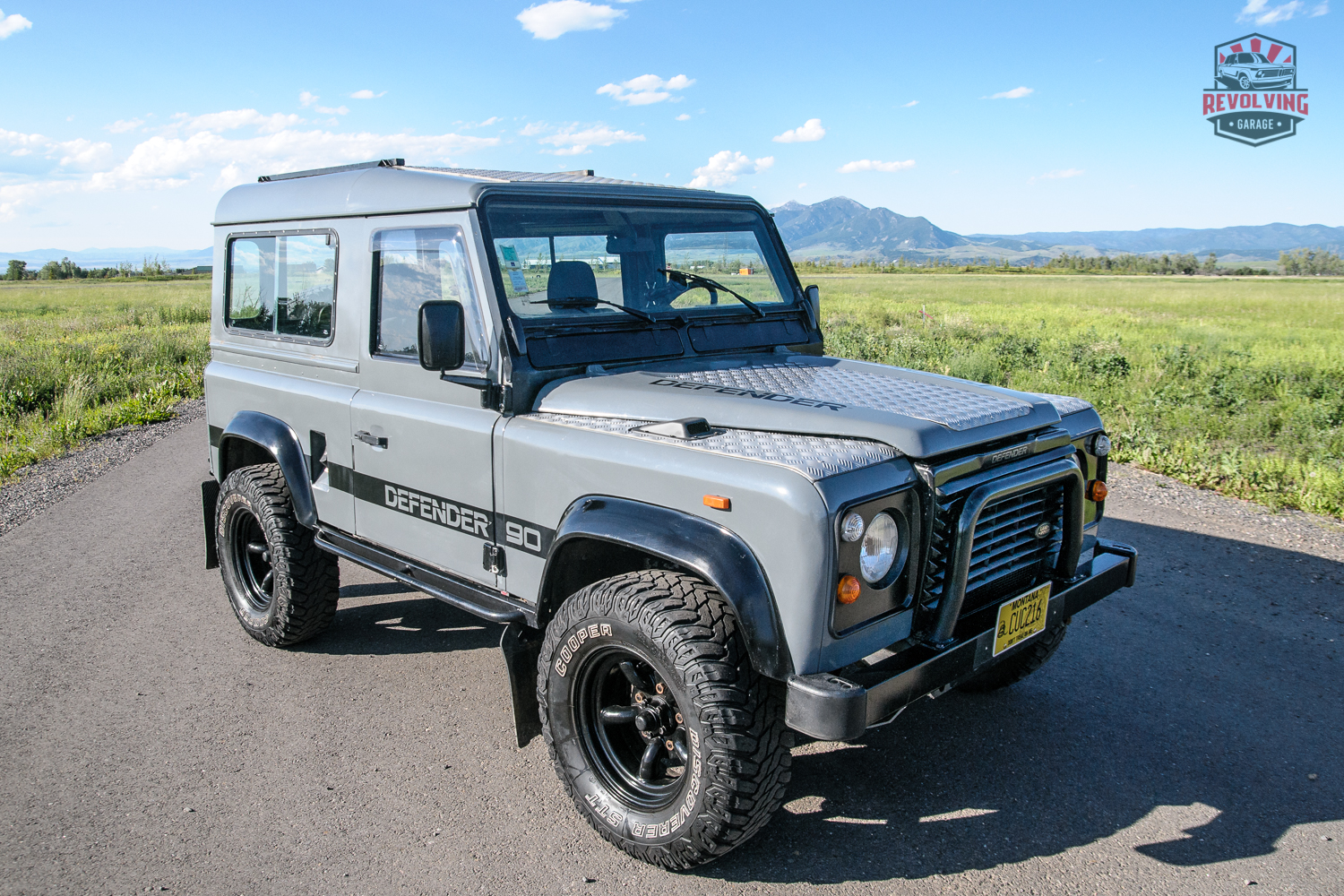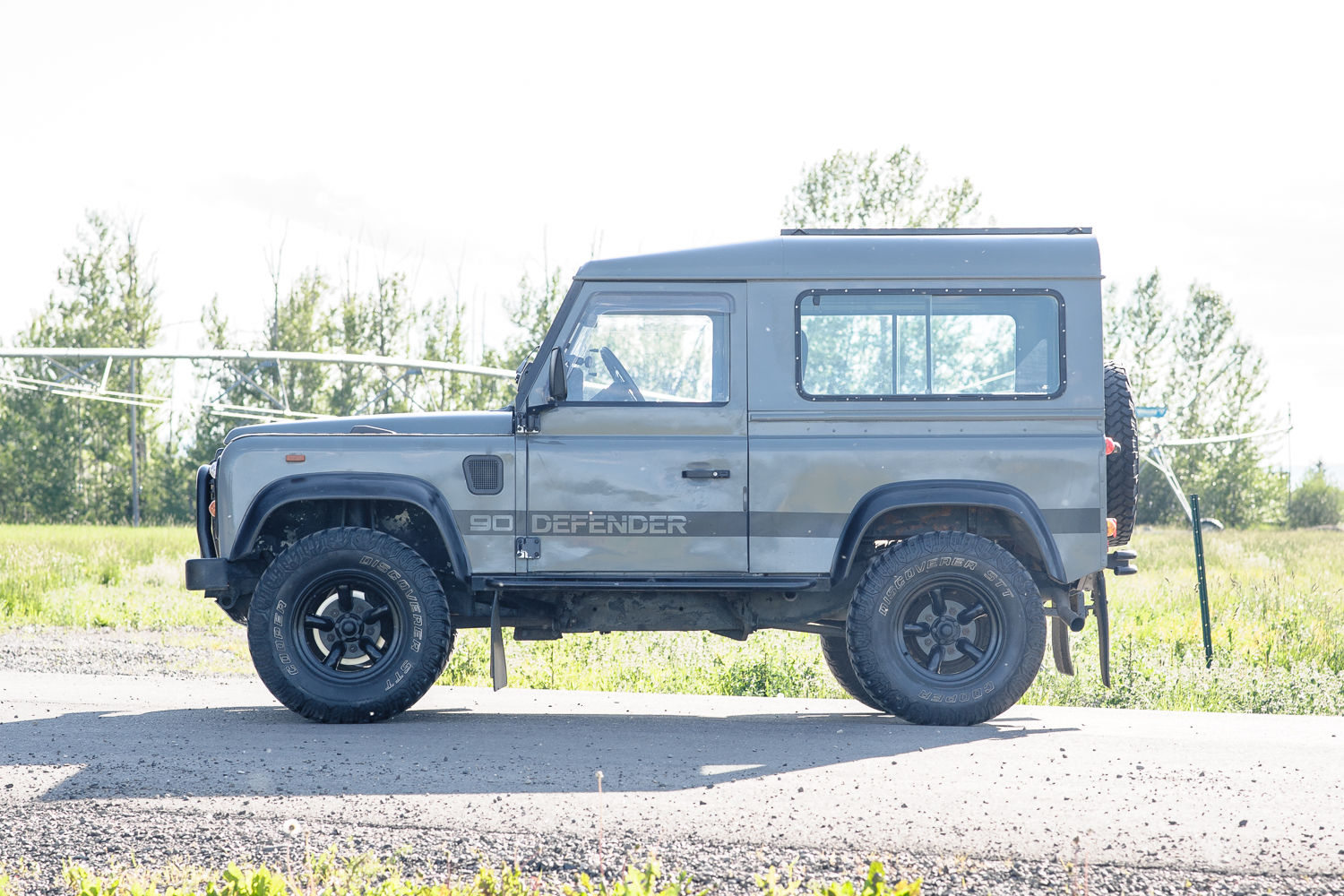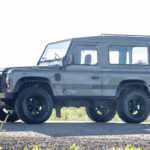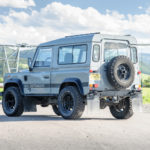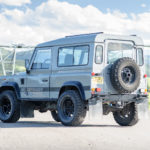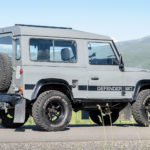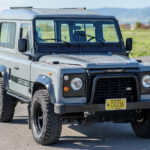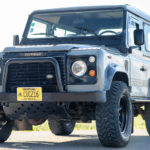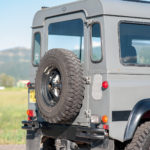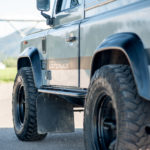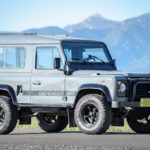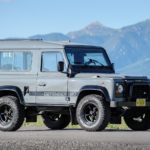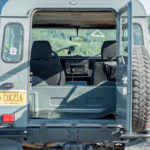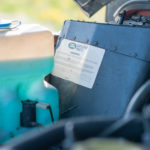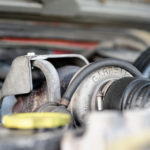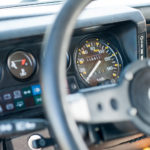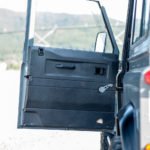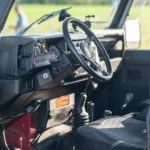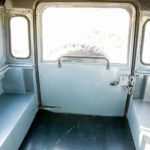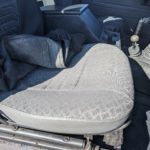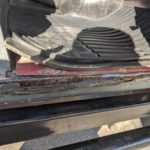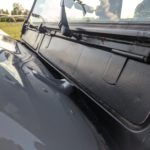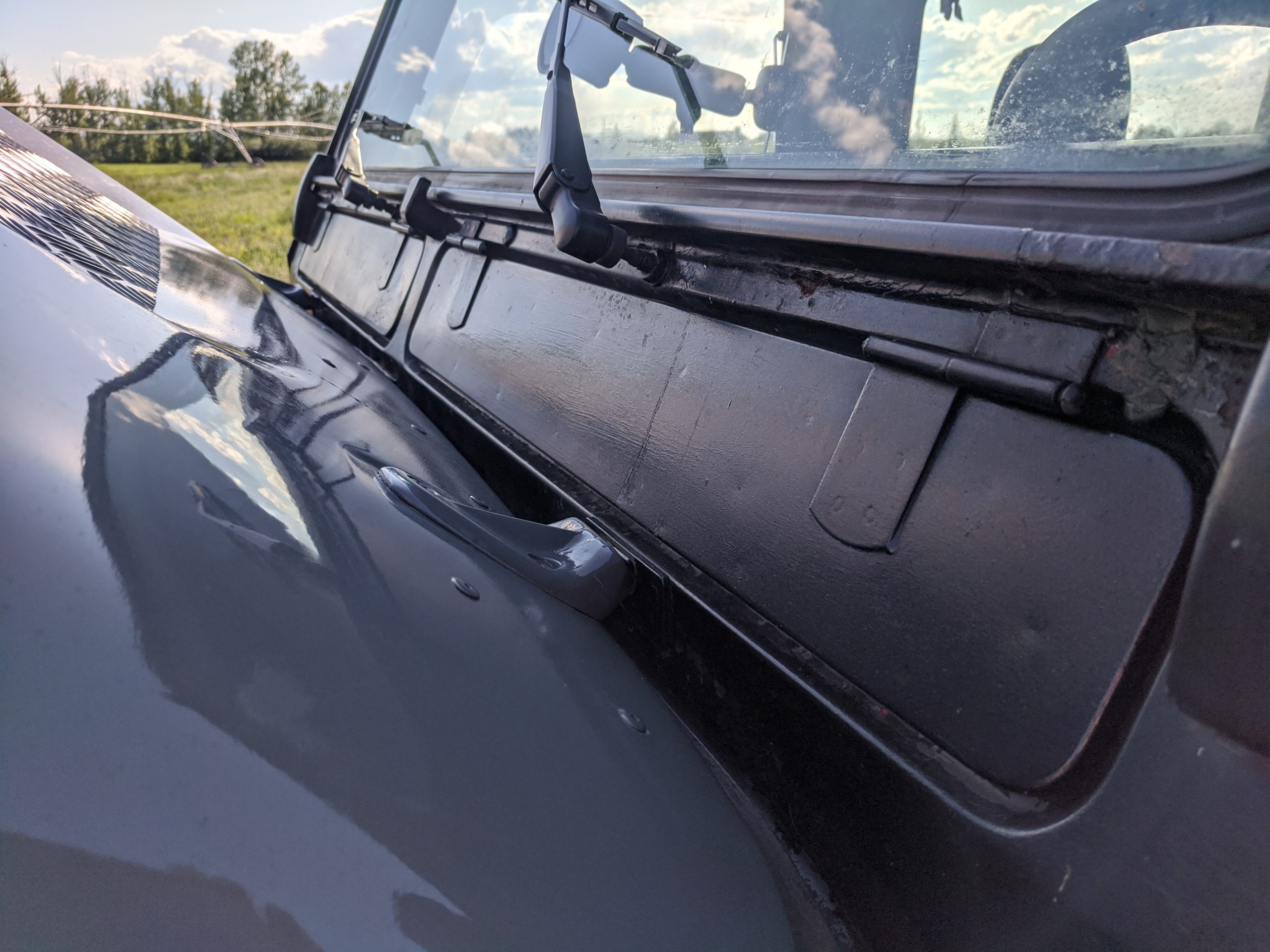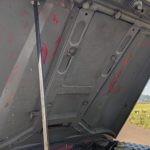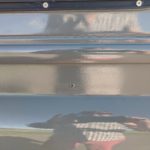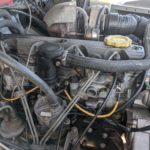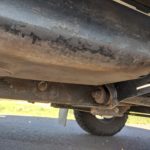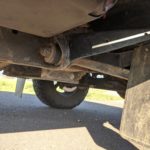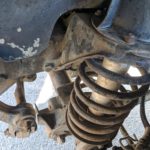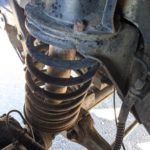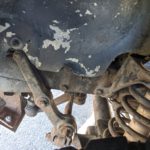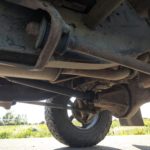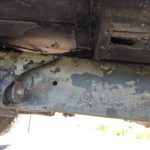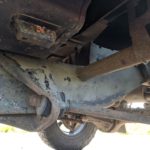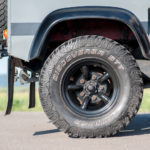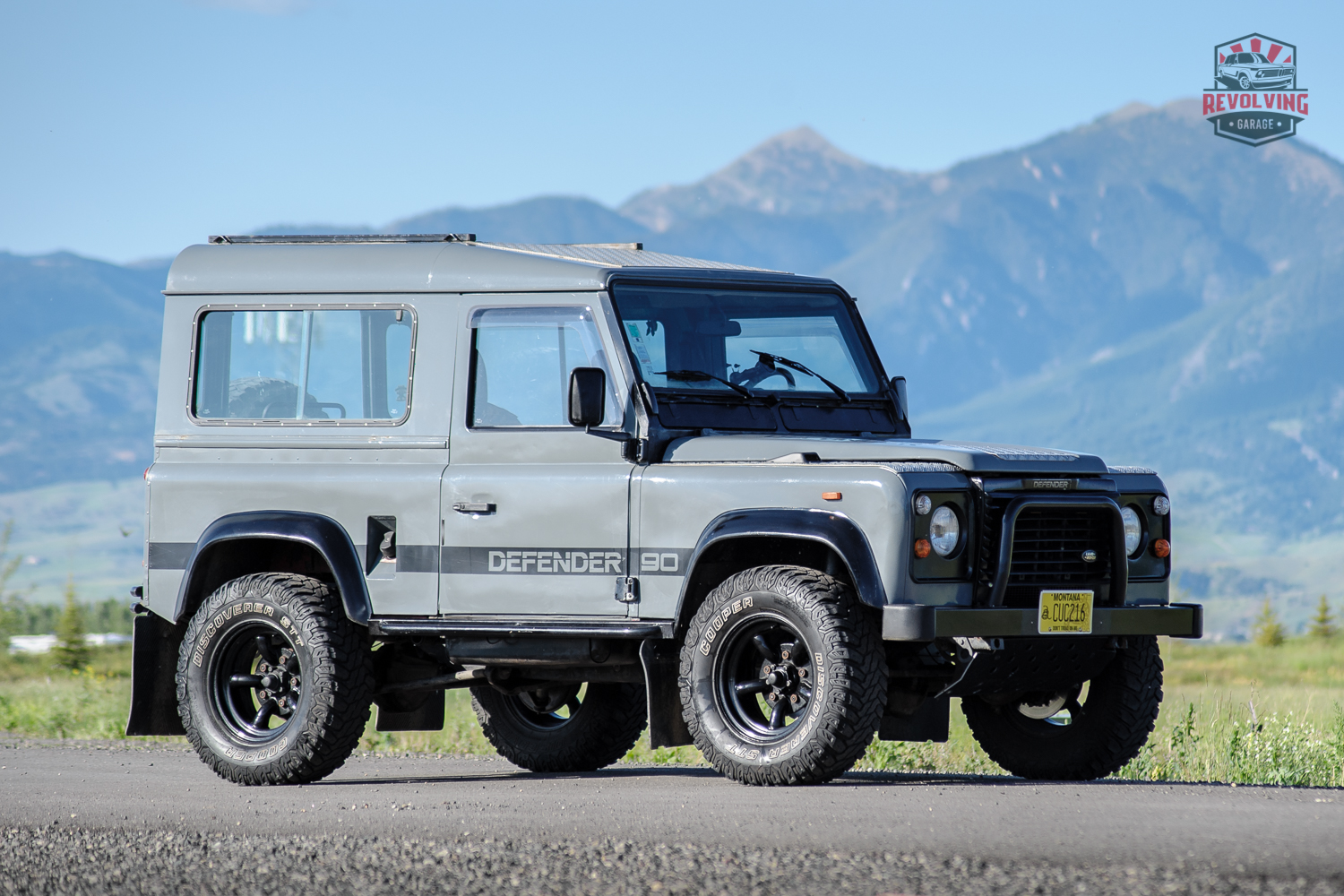
Revo Model Summary
An icon of British motoring, Land Rover Defender 90 was the successor to the Land Rover Series trucks. The "90" designation refers to the length of the wheelbase, and although there are other configurations, they were primarily 3 door trucks. The longer wheel based 110 designation trucks were primarily 5 doors. Gas and diesel (ROW only) engines were offered, and while some were robust, none were exciting. The 90 enjoyed several years in North American Specification ("NAS") with a gas V8. The example here is a ROW former Spanish firefighting truck.


My first sight of a Land Rover Defender in America was at a dealership in the mid 1990s. I came across a brochure for their commercial and military versions, the tagline was: “Land Rover Defender: Reliability, Supremacy, Lethality.” That description captivated me, and is something I still think about every time I see a Defender. I searched long and hard for a copy of that brochure when writing about the subject car here, but I couldn’t find one. I admit that time and imagination may have obscured my memory, and lethality may not even be a word, but one thing I am sure about: If Land Rover didn’t make that brochure, they should have. These trucks add up to so much more than the sum of their parts. They are legends, and there are few if any cars on the road that could legitimately own those three words.
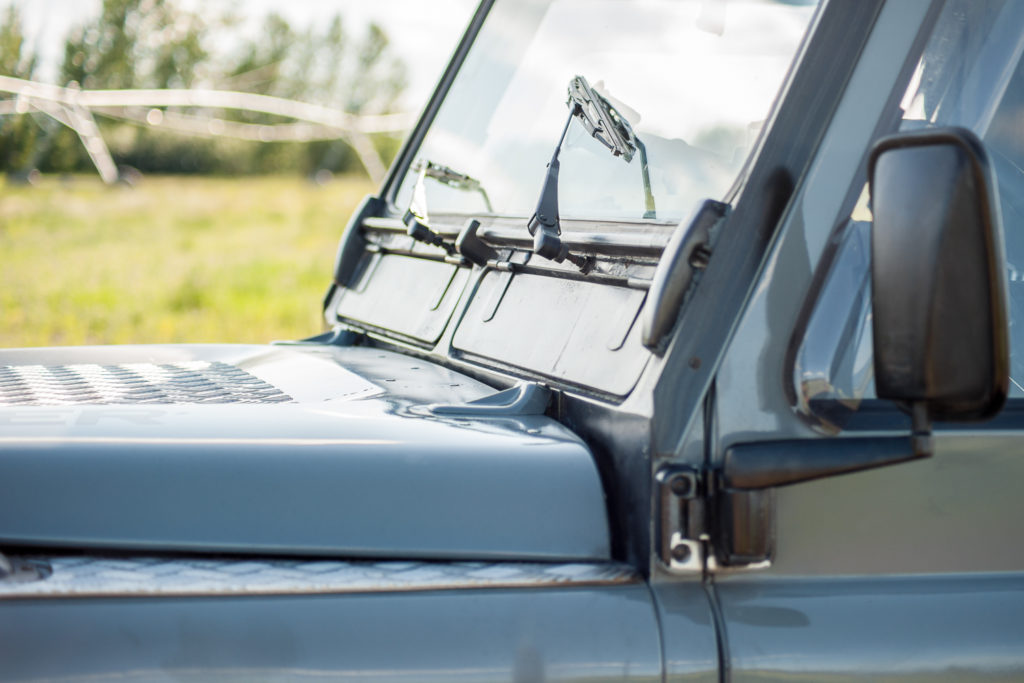
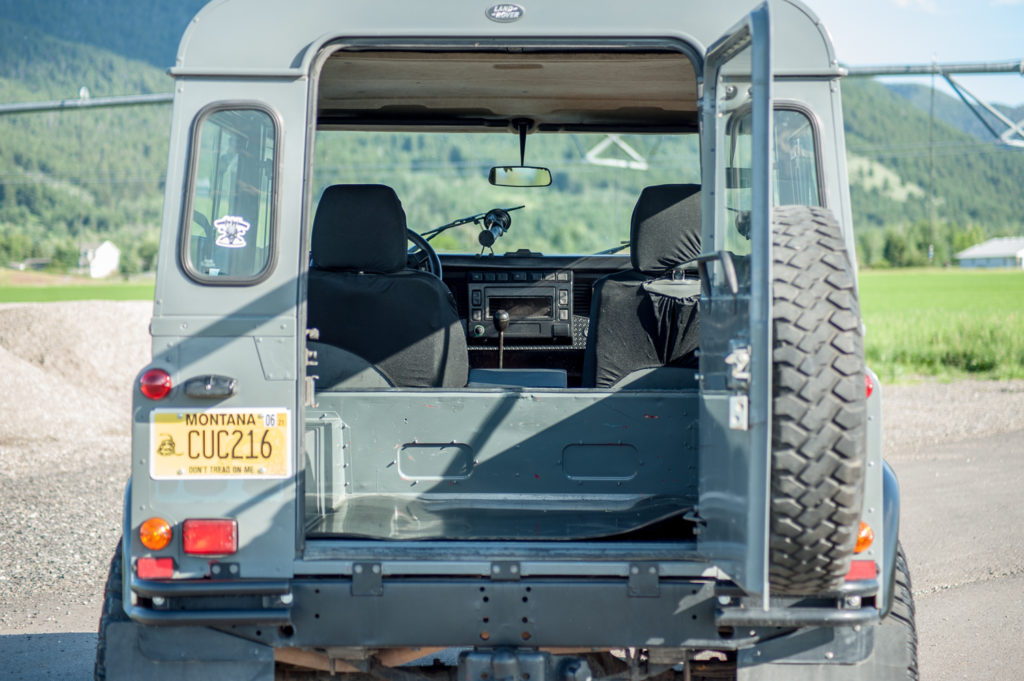

In the 1980s to 90s, Americans only exposure to Land Rover Ltd.’s vehicular offerings was the Range Rover. While always extremely capable, they were highly optioned and sold here as luxury vehicles. They were favored by the only people who could both afford and garage them: uber preppy suburbanites rushing to the docks in time to catch the last ferry to Nantucket. While in America the Range Rover was owned by a decidedly narrow slice of the American consumer, in Europe the Land Rover picture was much more diverse. Kings and Queens, gentlemen farmers, real farmers, Southwest Londoners (the penchant of the wealthy of SW1 to drive Range Rovers in the city gave rise to the moniker "Chelsea Tractor"), and of course militaries, fire departments, and police forces across Europe have relied on Land Rovers for their lives (literally), for decades.
The example shown here is a 1992 Land Rover Defender 90. The “90” represents the shortest wheelbase on the platform, at 92.9 inches (can you imagine the Germans calling something “90” that is actually 92.9 inches?) The Defender was an evolution of the aptly yet less colorfully named “Land Rover Series I, II and III” and then “Land Rover 90.” The Defender was, however, one of the bigger jumps in the evolutionary ladder with all new power trains, including the 200TDi and 5 speed transmission with low speed transfer case seen here, as well as cosmetic changes. This example is a Spanish market truck that was formerly used by a Spanish fire department. It was legally imported to the United States by a prior owner under EPA and US DOT exemptions for vehicles older than 25 years.
Read more about a modified Defender 110 (long wheel base) here.
This truck is powered by the tried and true Land Rover 200TDi. It’s a 2.5L diesel inline four cylinder engine with cast iron block and aluminum head. It features direct injection, and a Garrett T2 turbocharger. This engine was fitted to the (at the time) new Land Rover Discovery, as well as Range Rovers. In Defender trim it was factory rated at 109 hp with 188 lb-ft of torque. This engine was fitted to vehicles across Land Rovers’ offerings for many years, and parts are affordable and not difficult to source from numerous sellers in European and other markets. Power travels through a 5 speed manual transmission, with 2 speed (low and high) transfer case and full mechanical differential lock. The four wheel drive system is fully operational. It is used as a daily driver without issue.
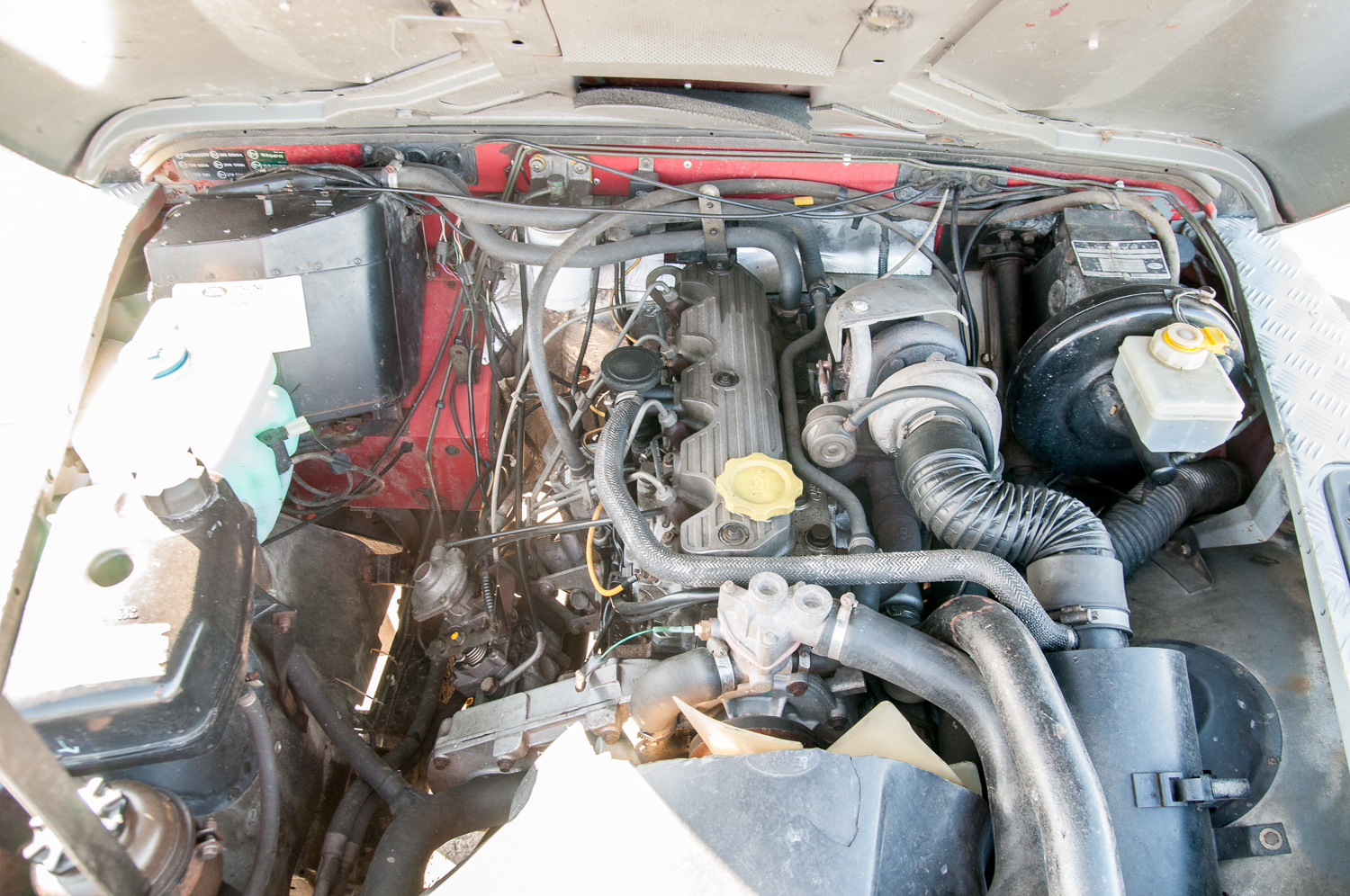

The body on this example was repainted sometime after its use as a fire truck. This history is not uncommon for these vehicles. This is both a testament to their utility, and durability. However, when shopping on the used market it is an important reminder not to assume that the vehicle you're looking at was used by an elderly gentlemen to get to church on Sunday and the grocery store on Monday. Some were ridden hard, and put away wet. This example is fitted with the “wagon” body which has a full hard cover over the rear of the vehicle, with full rear door and rear door mounted spare.
Suspension is a coil over shock setup.
Aftermarket wheels are fitted to the example you see here, Cooper Discoverer STT, 265/75 R16 tires. For reference, the spare wheel and tire are believed to be original specification.
The interior is as no nonsense as you would expect. The overall theme is functional and reliable. There is no radio or air conditioning. An aftermarket steering wheel and manual window cranks have been fitted. The seats have aftermarket covers. The upholstery underneath is a houndstooth fabric. The rear has built in benches in the back without upholstery or seatbelts.

This legend epitomizes “Reliability, Supremacy, and Lethality” (even if Land Rover didn’t say those exact words). While this truck still turns heads as fast as any Italian exotic, it carries none of the social baggage. Prices, however, are eye watering. Especially for something like this that is a slightly crusty ex-service vehicle. Typically you will find that NAS examples lived cushier often suburban lives. However, limited NAS examples were imported, and their prices are a multiple yet again of a legally imported former work horse like this. It is a motoring experience that cannot be duplicated with any other car on the road, and therein lies the value.

